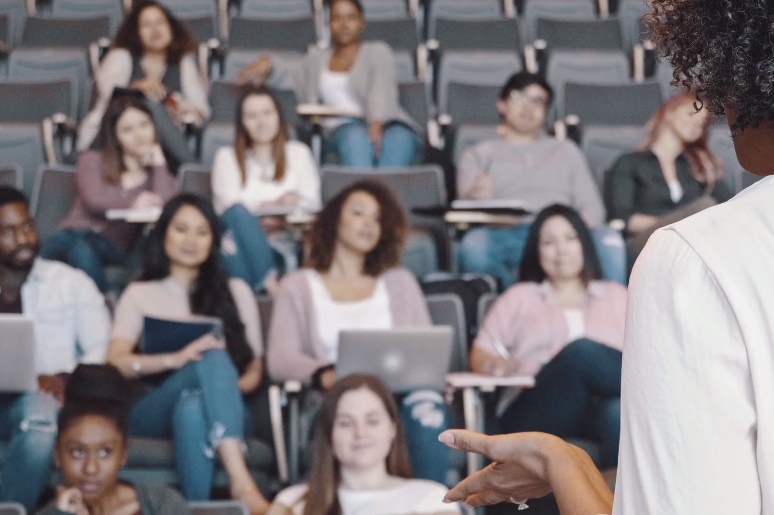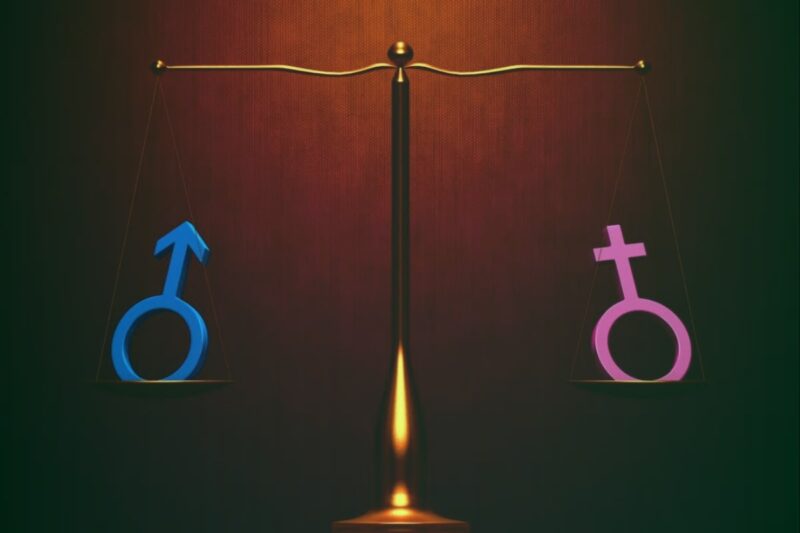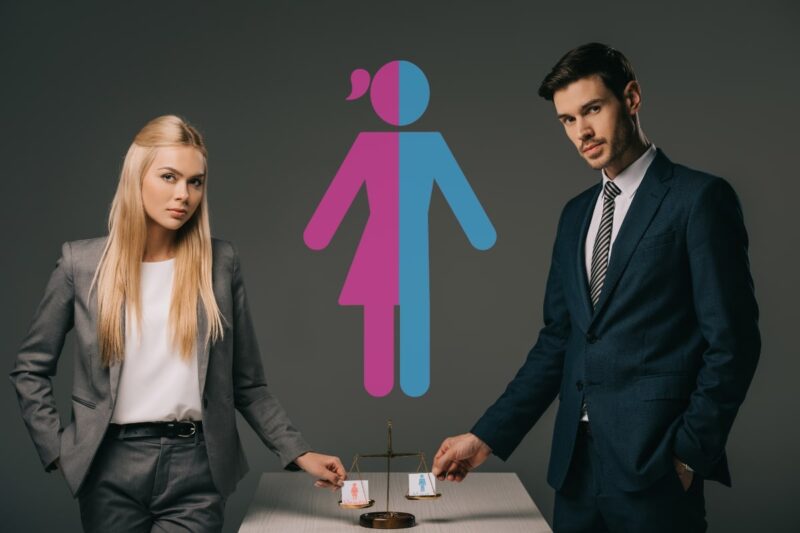Gender equality has long been a contentious issue, touching every aspect of society—from the home to the workplace and beyond. But what role does education play in eradicating gender-based biases and promoting equality?
In this article, we explore how schools and educational institutions act as a fulcrum, tilting the balance either towards reinforcing stereotypes or towards a more equitable society.
Historical Context
In the past, education was often an exclusive privilege, with barriers to entry that varied depending on gender. For women and non-binary individuals, these barriers were not just physical walls but also societal norms and expectations. It’s crucial to recognize the progress made over the years, yet there remains much work to be done.
The Coeducation Movement: This started in the 19th century in Western countries, gradually gaining traction worldwide. This was a significant milestone, as it facilitated equal educational opportunities for all sexes.
The Inequality in Curriculums
While access to education became more equitable, the curriculum did not immediately reflect this shift. Textbooks, reading lists, and educational materials were still predominantly Eurocentric and male-centric. Only in recent years have curricula begun to adapt, but the process is far from complete.
- Gender Stereotypes: For example, science, technology, engineering, and mathematics (STEM) fields were traditionally male-dominated, perpetuating the myth that men are more competent in these subjects.
- Historical Underrepresentation: The achievements of women and LGBTQ+ individuals have been sidelined in history classes, further reinforcing stereotypes.
Education as a Tool for Empowerment

Empowering Girls and Women
Education can be a potent instrument of empowerment. For girls and women, the knowledge and skills gained through education offer a pathway out of poverty, dependence, and marginalization.
- Economic Independence: A study by the World Bank found that for every year of secondary education completed, a girl’s future earnings could increase by 15-25%.
- Personal Agency: Education not only fosters cognitive development but also instills a sense of personal agency. Women with education are more likely to exercise control over their life choices, including marriage and family planning.
Empowering Boys and Men
While the focus is often on girls and women, it’s important to recognize that boys and men also benefit from a gender-equitable education. Teaching empathy, emotional intelligence, and critical thinking are crucial for dismantling toxic masculinity.
- Healthy Masculinity: Concepts of masculinity have been narrow, leaving little room for boys to express themselves authentically. By incorporating diversity in gender roles within educational materials, we can reshape these narratives.
Challenges in Gender-Inclusive Education

Societal Norms and Cultural Barriers
Despite advancements, several challenges impede the full implementation of gender-inclusive education. Societal norms, especially in patriarchal societies, still dictate what is “appropriate” for each sex, and this spills into educational settings.
Community Pushback: In some regions, even the suggestion of implementing a gender-inclusive curriculum faces backlash from communities clinging to traditional roles.
Financial and Resource Constraints
Money talks, and often, it’s shouting that there aren’t enough resources to implement gender-inclusive educational programs everywhere, especially in low-income areas or developing nations.
Budget Limitations: Many schools, particularly in impoverished areas, have to make do with outdated materials and curricula, making the gender inclusivity overhaul a difficult proposition.
Effective Strategies and Models

Teacher Training and Professional Development
Teachers play a pivotal role in molding young minds. Investing in teacher training to understand the complexities of gender can make a massive difference.
Real-world Examples: Finland and Canada have teacher training programs that emphasize inclusivity, and their students show more progressive attitudes towards gender roles.
Curriculum Overhaul
To effect real change, we must also scrutinize the content that students consume daily.
- Inclusion of Diverse Voices: A broad range of perspectives, including those of women, non-binary, and LGBTQ+ individuals, should be included in the curriculum.
- Interdisciplinary Approach: Gender studies should not be a standalone subject but integrated across disciplines.
The Way Forward

Policy Changes
Top-down approaches, including governmental policy changes, can catalyze gender-inclusive education. Introducing bills that mandate gender-neutral language and content is a step in the right direction.
Legislation Examples: Countries like Sweden have successfully implemented policies that promote gender equality in schools.
Grassroots Movements
In contrast, grassroots movements empower communities to take the initiative, bringing about change from the ground up. Both approaches are essential for achieving a gender-equal educational landscape.
Community Outreach: Grassroots organizations often partner with schools to offer workshops, teaching both students and staff about the importance of gender inclusivity.
Beyond School Walls: Education’s Ripple Effect on Society

Education doesn’t only happen within the confines of classrooms; it spills over into society at large. A gender-equal education fosters a society that is more welcoming and supportive of diverse roles and expressions. Public perception begins to shift when education emphasizes the capabilities and worth of all sexes.
Changing Tropes in Media: When children are raised with a balanced view of gender roles, they grow up to be adults who question and challenge the established norms. This has a ripple effect on areas like advertising, movies, and literature, where traditional gender roles have often been amplified.
Workplaces Transformed
A gender-equitable education prepares individuals for more balanced roles in their professional lives. This plays out in how they approach teamwork, leadership, and problem-solving. When men and women are educated to value each other’s contributions equally, it reflects in corporate culture, pay equity, and shared responsibility.
Closing the Gender Pay Gap: Countries like Iceland have almost closed their gender pay gaps, and this has been largely attributed to their progressive educational system that promotes equality from a young age.
Civic Engagement and Leadership
With a balanced education, women and non-binary individuals are more likely to engage in civic activities, run for public office, and take on leadership roles in organizations. This changes the narrative and ensures that diverse perspectives are considered in public decision-making.
Women in Politics: Studies show that countries with more women in leadership roles tend to have more sustainable policies and peaceful societies. Educating all sexes equitably is a stepping stone to achieving this.
Breaking the Cycle: Multigenerational Impact

Educating Parents
The role of parents in shaping a child’s worldview is undeniable. When adults learn about gender equality, they are more likely to raise their children in an environment free of biases, thus perpetuating a cycle of equality for future generations.
Parental Workshops: Some schools have begun offering workshops and courses on gender equality for parents, aimed at aligning home and school education on this crucial issue.
Impact on Family Dynamics
A balanced view of gender roles influences how chores, caregiving, and employment responsibilities are shared within families. This impacts not just the husband-wife dynamic but also how children perceive and internalize their roles in the household and society.
Shared Responsibilities: Studies have shown that children in homes where chores and responsibilities are shared equally between all genders grow up with a healthier perspective on roles.
The Power of Allies and Advocacy

Engaging Men as Allies
Promoting gender equality is not just a ‘women’s issue.’ It is essential to engage men in the conversation, educating them on their role as allies. When men understand the structural privileges they hold, they can become powerful advocates for change.
Men Advocating Real Change (MARC): Organizations like MARC are dedicated to engaging men in conversations about gender equality and encouraging them to become active advocates for change.
Intersectional Advocacy
Gender equality doesn’t exist in a vacuum. It’s crucial to consider other forms of marginalization, such as race, class, and sexual orientation, when advocating for gender equality.
Intersectional Feminism in Education: This calls for a multi-layered approach to education that takes into account various intersecting identities, ensuring that the fight for equality is inclusive of all marginalized groups.
FAQs
What is meant by gender in the context of education and gender equality?
It refers to the social and cultural attributes and opportunities associated with being male or female. In education, this means that men and women may face different expectations and opportunities based on societal norms, which can lead to inequality.
Why is it important to consider gender in educational program design?
Gender concerns are crucial in program design because men and women have different roles and face systemic inequality. Addressing these factors can lead to more effective and equitable educational programs.
What is gender mainstreaming in education?
It is a strategy for integrating gender concerns into the analysis, formulation, and monitoring of educational policies, programs, and projects. It aims to promote equality and the empowerment of women.
Why is gender equality important in education?
It is vital for sustainable development and human rights. It enables both men and women to make better decisions affecting their sexual and reproductive health, as well as educational and career paths.
Is gender equality a concern for men in education?
Yes, it affects both men and women. Societal norms and expectations shape men’s behavior and roles, often exposing them to greater risks and limiting their nurturing roles.
How does gender inequality impact women in education?
It often excludes or disadvantages women in decision-making and access to economic and social resources, including educational opportunities.
What are the consequences of gender inequality in education?
It limits the opportunities for one-half of the population, constraining women from reaching their full potential and thus affecting society as a whole.
How can educational programs address gender inequality?
Programs should focus on identifying and redressing power imbalances, giving women more autonomy, and ensuring that resources and decision-making are not weighted in men’s favor.
What are some strategies for achieving gender equality in education?
Strategies include promoting women’s empowerment, implementing gender mainstreaming, and adopting measures to compensate for women’s historical and social disadvantages.
Final Words
Education has the transformative ability to shake the very foundations of societal norms. It is not just about reading, writing, and arithmetic but also about fostering empathy, shattering stereotypes, and building a more equitable world.
Through dedicated efforts from educators, policymakers, parents, and communities, education can serve as the most potent weapon in our arsenal to promote gender equality. As Nelson Mandela once said, “Education is the most powerful weapon which you can use to change the world,” and in the context of gender equality, truer words have never been spoken.
